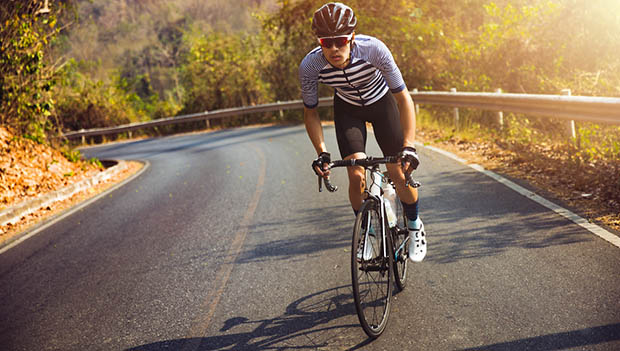
Cyclists know that weight and body composition are important factors in achieving better performance. Having a lighter, leaner body decreases the power output needed to propel yourself around on the bike. This essentially means that with the same power output, you can go farther and harder at a lower weight than at a higher weight. This makes nutrition, specifically with a focus on weight loss, a common and important part of the sport. So yes, weight loss can be beneficial, but when a cyclist takes things too far (also very common), those benefits turn into serious issues.
Cycling at your best requires the body to have enough energy to burn (to turn into watts). Losing weight, however, requires a deficit in energy intake vs. expenditure. What happens when a little healthy restriction spirals into a preoccupation with food and disordered eating tendencies that work against your performance and general health? Basically, short term gains turn into long term problems.
When your energy balance is too low for too long, your body is at risk for the following poor health conditions:
- Stalled weight loss
- Reduced power
- Increased fatigue
- Nutrient deficiency
- Low bone density
- Poor recovery
- Respiratory infection
- Hormone imbalance
- Mood swings
- Decreased immunity
- Cardiac abnormalities
And men, don’t fool yourselves into thinking that malnutrition and undereating is a female problem. Research shows that men in weight-dependent sports—like cycling—are just as prone to risky dietary behaviors. In fact, the classic female athlete triad—a condition relating poor energy balance to amenorrhea, low bone density and underweight BMI—has been renamed to Red-S, a broader, more inclusive condition.
Relative Energy Deficiency in Sport encompasses all the above symptoms as they relate to low energy availability in athletes. Energy availability (EA) is defined as caloric intake minus caloric output of training, divided by kilograms of fat-free body mass. For example, a 150-pound cyclist with 15-percent body fat who consumes 2800 calories a day and burns 1800 calories on a ride has a balance of 1000 calories. Divide those calories by the cyclist’s fat-free body mass in kilograms and we have an EA of 17 calories per kilogram. To be able to cover all the energy lost training and all other metabolic processes, research shows that an EA under 30 calories per kilogram can put an athlete at risk. In summary, this athlete needs to be consuming more calories on their training days to promote proper health functions. Consistently low EA will promote one or many of the above health issues that will be extremely difficult to reverse and ultimately crush any hopes of performing well.
Losing weight may be necessary for some cyclists to get in better shape and improve health conditions. Losing weight may be the extra edge you need to race at a more competitive level. However, if losing weight is your goal, it should be approached in a strategic, slow and healthful way. If you’re concerned you might not be eating enough, seek out a sports dietitian to help fine-tune and optimize your dietary intake to meet your specific cycling performance goals while maintaining your health.
READ THIS NEXT: Best Ways to Refuel After a Hard Cycling Workout


